Hi there, fellow dog parents! As a holistic veterinarian, I’m often asked about breed-specific health issues, and today, we’re focusing on our hardworking friends, the Australian Cattle Dogs. A common area of concern is Australian Cattle Dog Eye Health.
These robust dogs are known for their intelligence, agility, and endurance, but like every breed, they have their own set of health concerns. Our loyal companions rely on us to keep them healthy, and understanding their breed-specific health needs is crucial.
When it comes to Australian Cattle Dog Eye Health, there are several conditions that they are more prone to. It’s important to know what to look out for, how to prevent these conditions, and how to treat them if they do occur.
Whether you’re a seasoned Australian Cattle Dog owner or considering adopting one, understanding their eye health will help you provide the best possible care. So, let’s get started on this journey together, exploring common Australian Cattle Dog Eye Diseases, prevention strategies, and treatment options. Remember, our furry friends are counting on us!
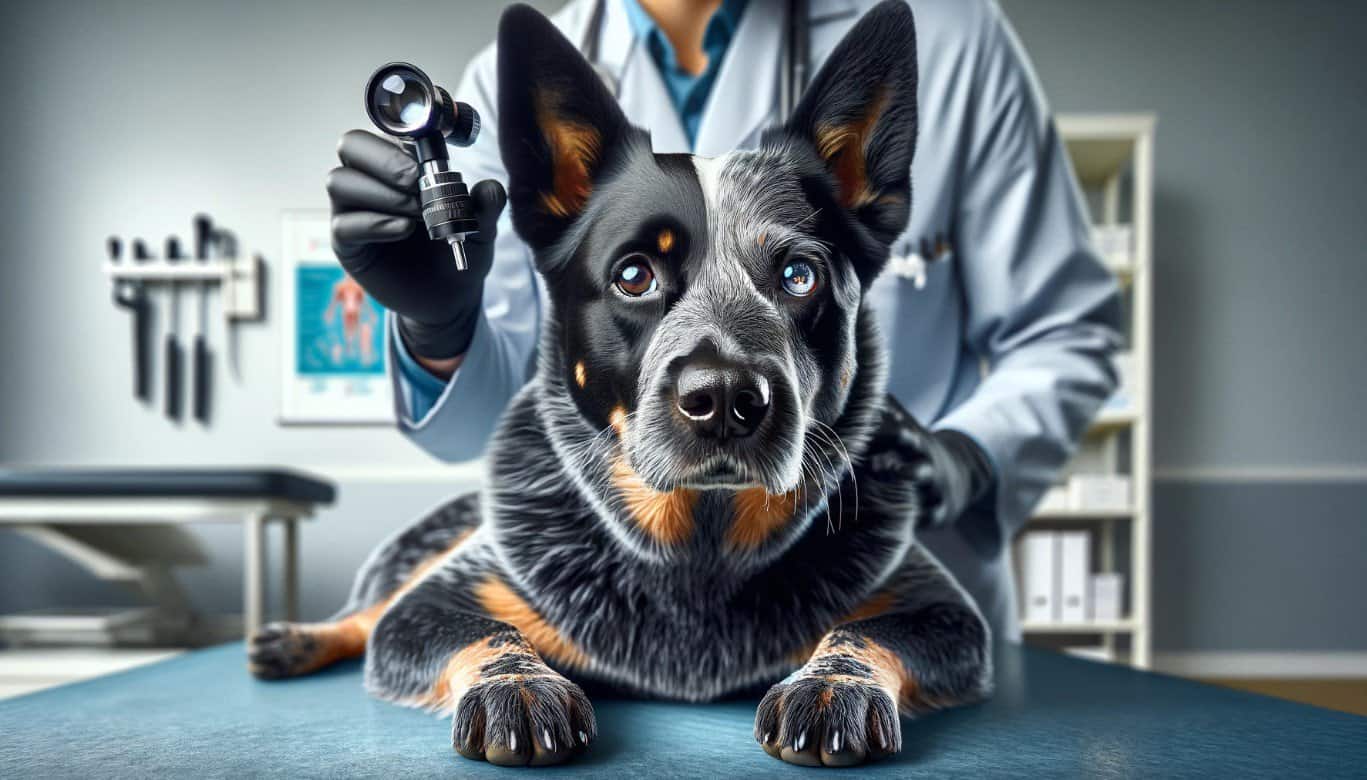
Understanding Breed Specific Eye Structure
To fully grasp the complexities of Australian Cattle Dog eye health, it’s essential to first understand the unique structure of their eyes. As a breed, these dogs have a keen sense of sight, which was bred into them for their original purpose – herding cattle. Their eyes are somewhat almond-shaped, medium-sized, and set wide apart, giving them a broad field of vision.
The cornea, the clear front surface of the eye, is quite resilient in Australian Cattle Dogs. It’s designed to withstand the rough and tumble of farm life, including exposure to dust, wind, and sunlight. Their lens, located behind the iris, is flexible and transparent, allowing for sharp focus on both near and distant objects – a vital trait for a herding dog.
However, the unique eye structure of Australian Cattle Dogs also makes them prone to certain health issues. For instance, their keen sight and exposure to outdoor elements can lead to conditions like Progressive Retinal Atrophy (PRA) and Primary Lens Luxation (PLL). Understanding these breed-specific eye traits is the first step towards proactive eye care for your Australian Cattle Dog.
Remember that not all eye issues are visible to the naked eye, and some can only be detected during a comprehensive eye exam by a veterinarian. Regular check-ups are a vital part of maintaining your Australian Cattle Dog’s eye health. With the right care and attention, you can help ensure your Australian Cattle Dog’s eyes remain as bright and clear as the outback sky.
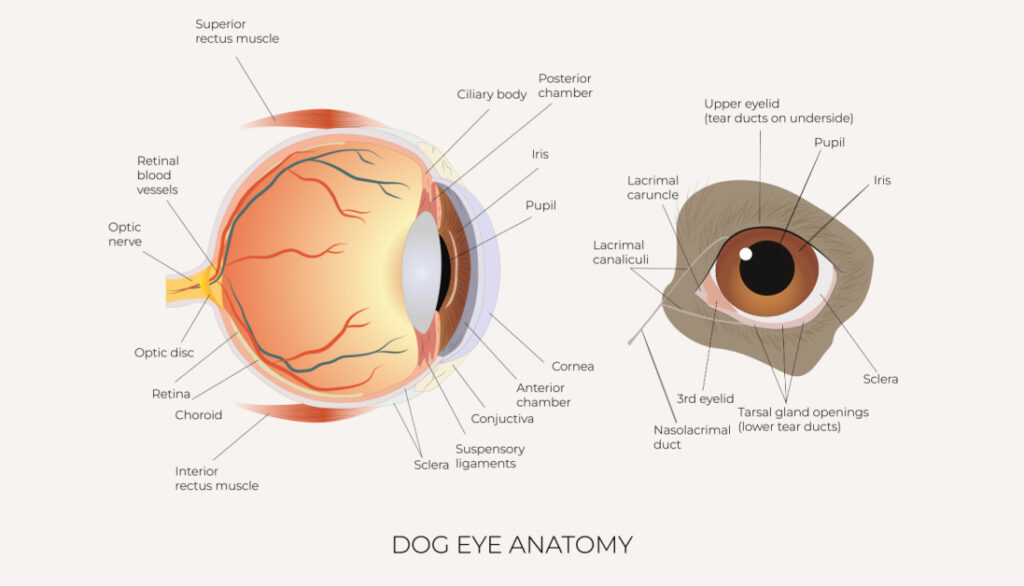
Common Eye Issues In Australian Cattle Dog
As a vet, I’ve seen my fair share of eye health issues in various breeds, but when it comes to Australian Cattle Dog Eye Health, there are a few common conditions that we should be aware of.
The first condition is Progressive Retinal Atrophy (PRA). This is a genetic disorder that affects the retina of your dog’s eye, leading to gradual vision loss and eventually blindness. The early signs of PRA in Australian Cattle Dogs often include night blindness or difficulty seeing in low light conditions.
Another common eye health issue in Australian Cattle Dogs is Primary Lens Luxation (PLL). PLL is a hereditary condition where the lens in the dog’s eye becomes dislocated. This can cause severe discomfort and may lead to glaucoma or blindness if not treated promptly.
Cataracts are also not uncommon in this breed. These are cloudy formations in the lens of the eye that can interfere with vision. While cataracts are often associated with aging, they can also be hereditary or caused by trauma to the eye.
The last common condition is Cherry Eye, a disorder where the gland under the third eyelid protrudes, giving the appearance of a ‘cherry’ in the corner of the dog’s eye. While it’s not typically painful, it can lead to secondary infections or dry eye if left untreated.
Here’s a brief overview:
- Progressive Retinal Atrophy (PRA): Genetic disorder leading to gradual vision loss and potentially blindness.
- Primary Lens Luxation (PLL): Hereditary condition causing lens dislocation, discomfort, and potential glaucoma or blindness.
- Cataracts: Cloudy formations in the eye lens, often due to aging, genetics, or trauma.
- Cherry Eye: Protrusion of the gland under the third eyelid, leading to potential infections or dry eye.
Remember, early detection is key to managing these conditions and maintaining your Australian Cattle Dog’s eye health. Regular vet check-ups and being aware of any changes in your dog’s behavior or appearance can help catch these issues early. If your dog is showing signs of discomfort, excessive tearing, redness, or changes in eye appearance, don’t hesitate to seek veterinary care.
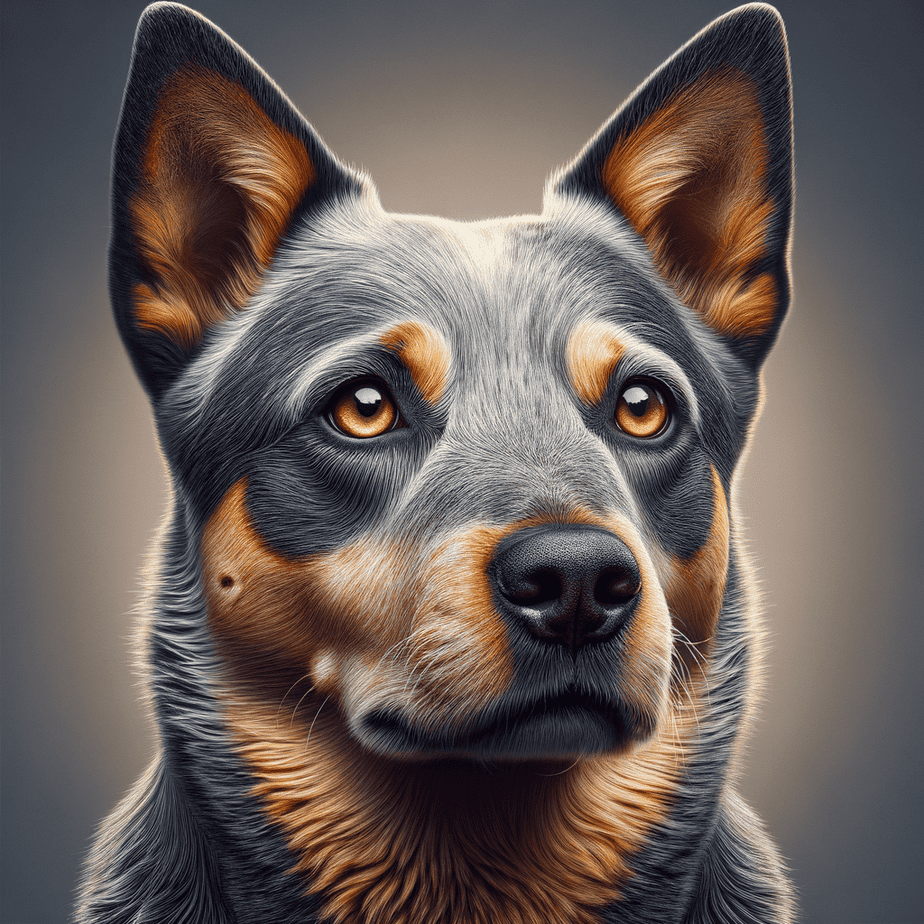
Prevention of Eye Problems
Ensuring your Australian Cattle Dog gets the right nutrients for optimal eye health is essential for maintaining clear vision and preventing age-related issues. Natural, nutrient-rich foods and supplements can play a key role in supporting their eyesight. From vitamin A-packed freeze-dried liver treats to antioxidant-rich blueberries and targeted supplements like Eyeplex by Standard Process, there are several ways to nourish your dog’s eyes. In this section, we’ll explore how these powerful ingredients contribute to long-term vision health and overall well-being.
Eyeplex by Standard Process
Eyeplex by Standard Process is a specialized supplement designed to support your Australian Cattle Dog’s eye health with a blend of essential nutrients. Formulated with key vitamins, minerals, and antioxidants, Eyeplex helps protect against oxidative stress, supports retinal function, and promotes overall vision health. Ingredients like vitamin A, vitamin C, and zinc contribute to maintaining strong eyesight, while whole food ingredients provide additional phytonutrients for cellular protection. Adding Eyeplex to your Australian Cattle Dog’s diet can be especially beneficial for aging dogs or breeds prone to eye conditions, offering targeted nutritional support to keep their vision sharp and healthy for years to come.
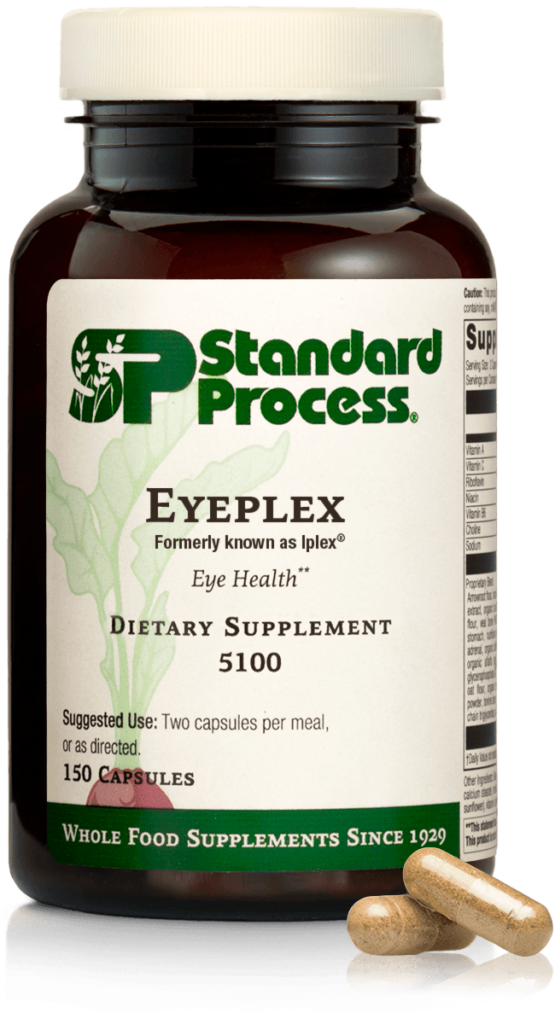
Freeze-Dried Blueberries
Freeze-dried blueberries are a powerhouse of antioxidants that can help protect your Australian Cattle Dog’s eyes from oxidative stress and age-related damage. Rich in vitamins C and E, as well as anthocyanins, these tiny but mighty berries help combat free radicals that can contribute to eye diseases like cataracts and macular degeneration. Incorporating freeze-dried blueberries into your dog’s diet provides a natural and delicious way to support retinal health, reduce inflammation, and promote overall vision longevity. Plus, they’re a low-calorie, dog-friendly treat that makes a great addition to a balanced diet for long-term eye health.
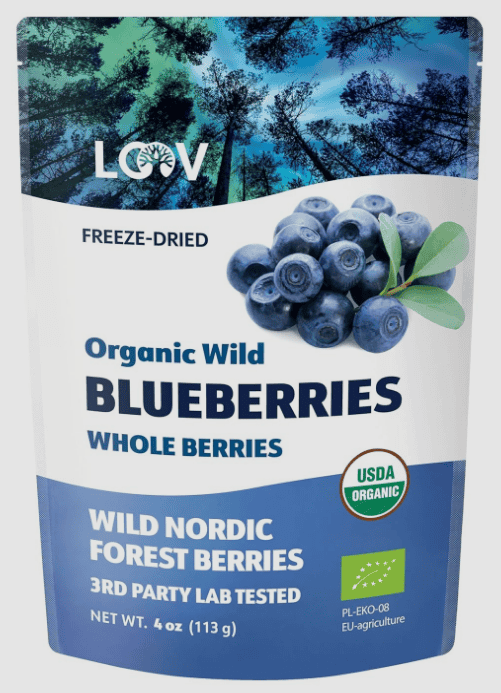
Freeze-Dried Liver
Freeze-dried liver treats are an excellent natural source of vitamin A, an essential nutrient for your Australian Cattle Dog’s eye health. Vitamin A plays a crucial role in maintaining good vision, especially in low-light conditions, while also supporting overall immune function and skin health. Since liver is rich in bioavailable vitamin A, incorporating freeze-dried liver treats into your dog’s diet provides a convenient and nutritious way to promote optimal eye function. Just be sure to feed them in moderation, as excessive vitamin A can lead to toxicity. Adding these nutrient-packed treats to your pup’s routine is a simple, tasty way to support their long-term vision and well-being!

By prioritizing your Australian Cattle Dog’s eye health through a balanced diet and nutritional supplements, you can help prevent many common eye issues. These simple steps can go a long way in ensuring your pup’s eyes stay healthy and clear for years to come.
Indoor Air Quality
Indoor air quality can significantly impact your Australian Cattle Dog’s eye health. Dust, dander, and other airborne particles can irritate their eyes, leading to problems like conjunctivitis. Here are some steps to improve indoor air quality:
- Regular Cleaning: Vacuum and dust your home regularly to reduce the amount of dust and dander in the air.
- Use Air Purifiers: These devices can help filter out harmful particles from the air.
- Keep Windows Closed: During high pollen seasons or in polluted areas, keep windows closed to prevent irritants from entering your home.
Sprays, Diffusers, Candles, Incense
While these items can make your home smell great, they can also irritate your Australian Cattle Dog’s eyes. Here’s what you can do to minimize their impact:
- Choose Unscented Products: Opt for unscented cleaning products, air fresheners, and candles whenever possible.
- Use Diffusers Sparingly: If you use essential oil diffusers, do so sparingly and in a well-ventilated area. Some essential oils can be harmful to dogs.
- Avoid Smoke: Smoke from candles and incense can irritate your dog’s eyes. If you must use them, do so in a separate room from your dog.
Maintaining a clean and safe environment is a simple but effective way to prevent many common eye problems in Australian Cattle Dogs. Remember, your dog’s eyes are sensitive, and what doesn’t bother you might bother them. So, always consider their needs when making decisions about your home environment. This will go a long way in maintaining your Australian Cattle Dog’s eye health.
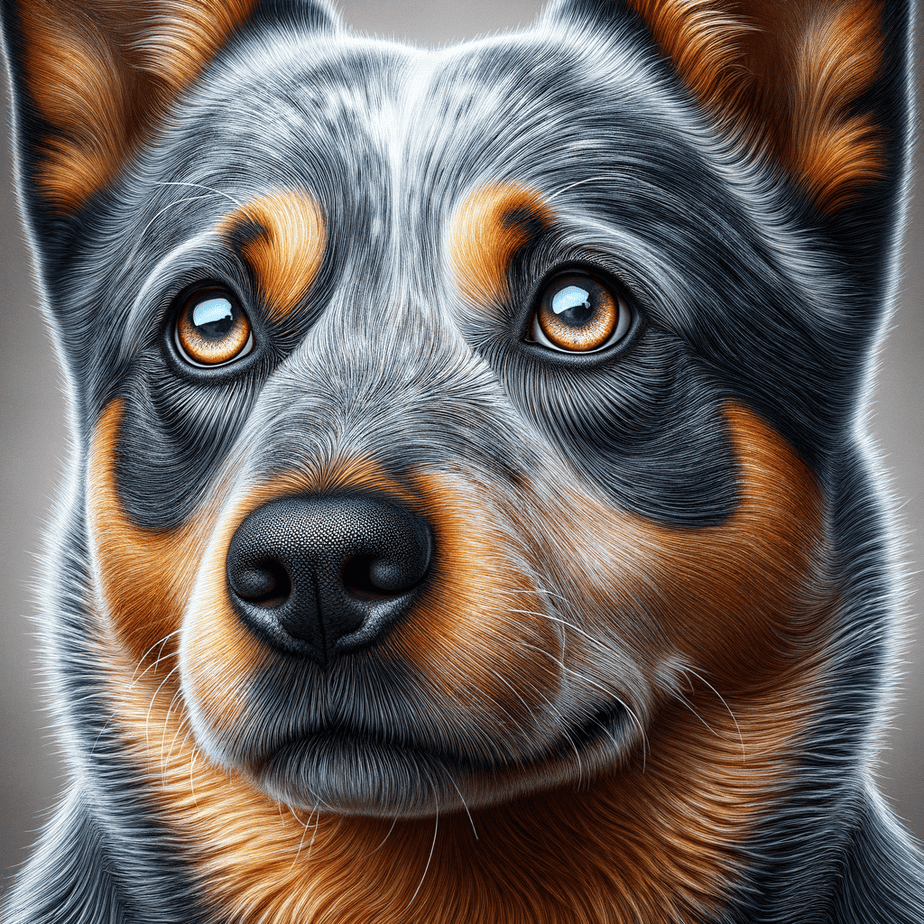
Routine Australian Cattle Dog Eye Care & Maintenance
Caring for your Australian Cattle Dog’s eyes is an essential part of maintaining their overall health. Regular eye care can significantly reduce the risk of eye diseases and ensure that your pet enjoys a good quality of life. Here are some tips on how to take care of your Australian Cattle Dog’s eyes.
Daily & Weekly Care & Maintenance
Just like humans, dogs need their eyes cleaned regularly. You should make a habit of checking your Australian Cattle Dog’s eyes every day for any signs of redness, swelling, or discharge. Use a soft, damp cloth to gently clean around the eyes, being careful not to touch the eye itself.
Moreover, it’s also essential to keep an eye out for any changes in your dog’s vision. If your dog is bumping into things or seems hesitant to jump or climb, it might be a sign of vision loss. In such cases, you should consult your vet immediately.
Monitor Hair Length, Nail Length, Bath Frequency
Australian Cattle Dogs are known for their thick and sometimes unruly coats, and long hair around the eyes can cause irritation. Therefore, it’s crucial to regularly trim the hair around the eyes to prevent it from poking into the eye and causing discomfort or injury.
Nail length is another aspect that needs attention as long nails can inadvertently scratch the eye, causing serious damage. Regular nail trims should be part of your dog’s grooming routine.
Lastly, bathing your Australian Cattle Dog too frequently can dry out their skin and eyes, leading to irritation and possible eye health issues. Therefore, it’s recommended to bathe your dog only when necessary and avoid getting shampoo or other bath products in their eyes.
Remember, regular eye care is key to Australian Cattle Dog Eye Health. By following these simple steps, you can ensure your dog’s eyes stay healthy and free from diseases.
However, despite all your efforts, if your dog shows signs of eye discomfort or vision loss, it’s vital to seek professional help. Early detection and treatment can prevent many eye health issues from becoming serious. So, always keep your vet in the loop about your dog’s eye health.
Frequently Asked Questions
1. What are common eye health conditions in Australian Cattle Dogs?
Australian Cattle Dogs are prone to several eye health conditions, including:
- Progressive Retinal Atrophy (PRA)
- Cataracts
- Collie Eye Anomaly (CEA)
- Distichiasis
- Entropion
2. How can I identify if my Australian Cattle Dog has an eye problem?
Watch out for the following signs that may indicate an eye problem:
- Excessive tearing or discharge
- Redness or inflammation
- Cloudiness or opacity in the eye
- Squinting or rubbing of the eyes
- Visible third eyelid
3. Can eye conditions in Australian Cattle Dogs be treated?
Many eye conditions in Australian Cattle Dogs can be managed or treated, depending on the specific condition. It is important to consult with a veterinarian for proper diagnosis and treatment options.
4. How can I prevent eye problems in my Australian Cattle Dog?
To help maintain good eye health in your Australian Cattle Dog, consider the following preventive measures:
- Regular veterinary check-ups
- Keeping the eyes clean and free from debris
- Avoiding exposure to irritants or chemicals
- Providing a balanced diet with essential nutrients
- Protecting the eyes from excessive sunlight or UV radiation
5. When should I seek veterinary attention for my Australian Cattle Dog’s eye problem?
If you notice any signs of eye discomfort or abnormality in your Australian Cattle Dog, it is recommended to consult a veterinarian as soon as possible. Early detection and treatment can help prevent further complications and ensure the best possible outcome for your dog’s eye health.
